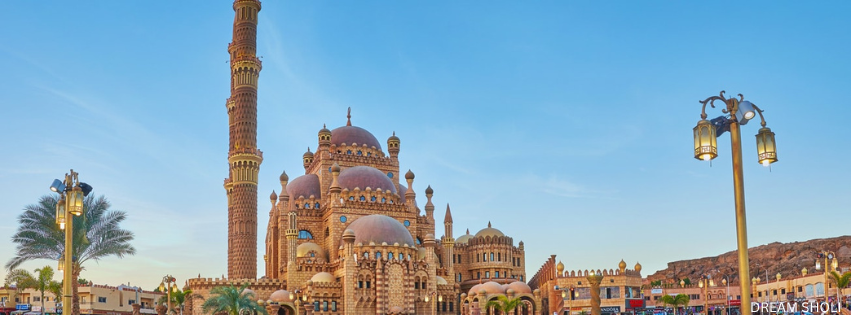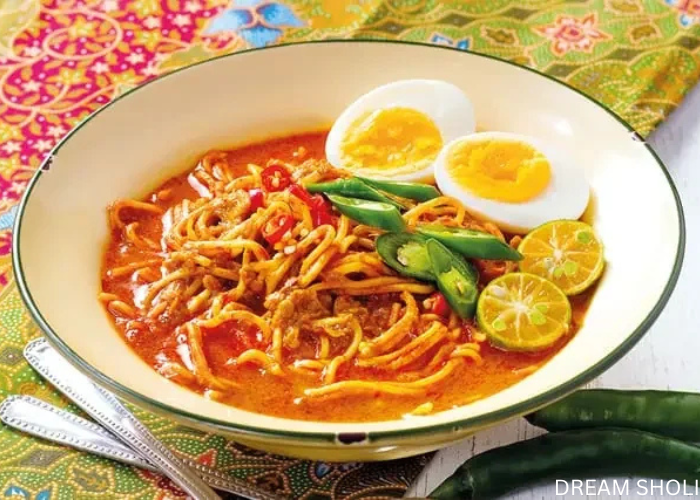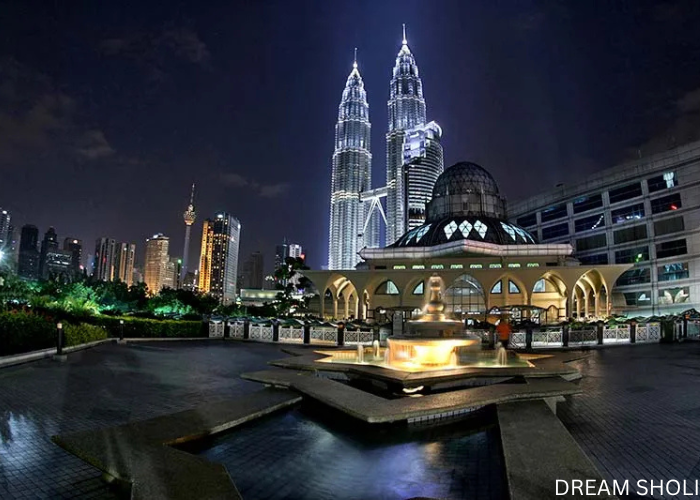
This country showcases a harmonious blend of Malay, Chinese, Indian, and indigenous influences, creating a unique and vibrant atmosphere. Kuala Lumpur, the capital, is dominated by the iconic Petronas Twin Towers, which stand as a symbol of modernity and progress. In contrast, the historical city of Malacca offers a glimpse into the country’s colonial past with its well-preserved architecture and charming streets. Malaysia’s allure extends beyond urban landscapes to its stunning natural environments. The pristine beaches of Langkawi invite relaxation, while the lush rainforests of Borneo and the peninsula harbor diverse wildlife and flora, appealing to adventure enthusiasts and nature lovers. The culinary scene is a true reflection of the nation’s multicultural heritage, boasting an array of delectable dishes such as nasi lemak a fragrant rice dish served with sambal, fried crispy anchovies, and boiled egg, rendang, a spicy meat dish slow-cooked in coconut milk, and satay, skewered and grilled meat served with a rich peanut sauce. Whether exploring bustling cities, historical landmarks, or the great outdoors, Malaysia offers an enriching experience for every traveller.
Malaysia experiences a tropical climate characterized by high temperatures and humidity throughout the year. The nation has two primary monsoon seasons: the southwest monsoon from May to September, and the northeast monsoon from November to March. Each monsoon period influences the region’s weather patterns, particularly in terms of rainfall and storm activity. During the southwest monsoon, the western parts of Peninsular Malaysia, including areas like Kuala Lumpur and Malacca, may receive consistent rainfall, although this season generally brings lighter rains than the northeast monsoon. In contrast, the northeast monsoon, which peaks between December and January, has a more pronounced effect on the eastern coast of Peninsular Malaysia and areas of Malaysian Borneo, such as Sabah and Sarawak. These regions often experience heavy, sustained rainfall, occasional flooding, and rough seas, which can impact travel and outdoor activities.
Temperatures across Malaysia remain relatively stable, ranging between 25°C and 35°C , with coastal and lowland areas generally being warmer, while higher-altitude regions, such as the Cameron Highlands, are noticeably cooler. Given Malaysia’s consistently warm, humid climate and varying rainfall patterns, checking the weather forecast prior to planning outdoor activities is recommended to ensure an enjoyable and safe experience during your stay.

Malaysia is celebrated for its rich and diverse food culture, which vividly reflects its multicultural heritage and cosmopolitan history. Malaysian cuisine blends the culinary traditions of Malay, Chinese, Indian, and indigenous influences, creating a unique and memorable array of flavors. Signature dishes include satay, a flavorful grilled skewer of marinated meats served with a spicy peanut sauce; rendang, a slow-cooked, fragrant meat stew with a rich, spicy coconut base; laksa, a vibrant noodle soup with a spicy, tangy broth; and nasi lemak, the nation’s beloved coconut-infused rice dish, typically served with anchovies, boiled eggs, peanuts, and sambal chili paste. Food plays a central role in Malaysian society, serving as a focal point for gatherings, celebrations, and a shared sense of community. Street food is especially popular, with bustling hawker centers, open-air food stalls, and lively markets offering a vast array of affordable, delicious meals that attract both locals and visitors. Malaysia’s cultural fabric is a vibrant and colorful tapestry of traditions, festivals, and artistic expressions.
The country celebrates a diverse array of religious and cultural holidays, such as Hari Raya Aidilfitri (marking the end of Ramadan for Muslims), Chinese New Year, Deepavali (the Hindu festival of lights), and Christmas. The warm hospitality and welcoming spirit of the Malaysian people further enhance the cultural experience for travelers, making Malaysia a truly captivating and memorable destination.


Kuala Lumpur, the dynamic capital of Malaysia, is famous for its iconic Petronas Twin Towers, bustling street markets, and diverse culinary scene. The city offers an intriguing mix of modern skyscrapers and historic sites, creating a vibrant blend of the past and present. Visitors can explore notable landmarks like the Sultan Abdul Samad Building, a striking example of colonial architecture, and the Batu Caves, a revered Hindu shrine nestled within limestone hills. Known as a cultural melting pot, Kuala Lumpur is a destination for those looking to experience Malaysia’s multicultural heritage. Kuala Lumpur International Airport, located about 45 kilometers south of the city in Sepang, is one of Southeast Asia’s busiest airports and a major gateway to Malaysia. It features two main terminals: KLIA (the Main Terminal) and KLIA2 (the Low-Cost Carrier Terminal), catering to a wide range of domestic and international travelers. The airport is well-equipped with an array of amenities, including retail outlets, dining establishments, lounges, and various services for passenger convenience. Efficient transportation links connect KUL to Kuala Lumpur’s city center, making it easy for travelers to reach their destinations. Kuala Lumpur International Airport is a vital aviation hub that connects Malaysia with numerous global destinations, serving as a significant entry point for international visitors to the country.


Johor Bahru, Malaysia’s lively metropolis situated at the southern tip of the Malay Peninsula, stands just across the border from Singapore. Known for its dynamic energy and modern attractions, Johor Bahru offers a unique blend of retail, entertainment, and historical sites. Visitors can explore bustling shopping malls, unwind at exciting theme parks like Legoland Malaysia, and admire significant cultural landmarks such as the Sultan Abu Bakar State Mosque. The city also boasts a vibrant street life and culinary scene, with a variety of local dishes that reflect Johor Bahru’s multicultural heritage. Senai International Airport (JHB), located in Kulai about 32 kilometers northwest of the city center, serves as the primary gateway for Johor Bahru and the broader southern region of Peninsular Malaysia. The airport provides a full range of essential amenities, including dining facilities, duty-free shopping, and efficient transportation links to Johor Bahru, ensuring a smooth travel experience. Strategically positioned near both Malaysia and Singapore, Senai International Airport is a vital hub, offering convenient access to local and international destinations. Its location and modern facilities make it an important transit point for travelers visiting Johor Bahru and beyond.
Malacca, also known as Melaka, is a charming historic city in Malaysia celebrated for its rich cultural heritage and historical significance. Designated as a UNESCO World Heritage Site, Malacca is famed for its lively Jonker Street night market, where local handicrafts, antiques, and street food abound. The city showcases beautifully preserved colonial architecture from its Portuguese, Dutch, and British influences, offering a unique window into Malaysia’s layered past. Key attractions include the iconic St. Paul’s Hill, which offers sweeping views and historical ruins, and the remnants of the A Famosa fort, one of Southeast Asia’s oldest surviving European architectures. Visitors can explore a diverse array of museums, temples, and the distinct Peranakan culture, making Malacca an appealing destination for history enthusiasts and food lovers alike. Malacca International Airport (MKZ), located in Batu Berendam about 10 kilometers from the city center, serves as a convenient gateway for those looking to immerse themselves in Malacca’s historical and cultural offerings. With its cultural charm, historic allure, and welcoming atmosphere, Malacca offers visitors a fascinating glimpse into Malaysia’s past, making it a must-visit destination for anyone interested in the country’s heritage and multicultural fabric.


Kota Kinabalu, the vibrant capital of Sabah, Malaysia, is renowned for its scenic beauty, bustling markets, and proximity to the majestic Mount Kinabalu. This coastal gem offers visitors a harmonious mix of city life and natural wonders, featuring attractions like the Sabah State Museum, the serene Kota Kinabalu City Mosque, and the Tunku Abdul Rahman Marine Park, where pristine islands await exploration. With its beautiful beaches, vibrant cultural scene, and reputation for fresh, delectable seafood, Kota Kinabalu is an enticing destination for those eager to experience the rich landscapes and heritage of Borneo. The city is conveniently served by Kota Kinabalu International Airport (BKI), located in Sepanggar, approximately 8 kilometers from the city center. As Sabah’s main airport, BKI connects the region to multiple domestic and international destinations, making it a vital access point for travelers venturing into Borneo. The airport provides an array of modern amenities, including a variety of dining options, duty-free shopping, and efficient transport links to central Kota Kinabalu. With its strategic location and seamless access to Sabah’s stunning natural sites, Kota Kinabalu International Airport plays an essential role in welcoming visitors to this remarkable part of Malaysia.

Explore the world effortlessly with our tailored travel packages. Let us handle the details while you create unforgettable memories.
Copyright 2024 Dream Sholi